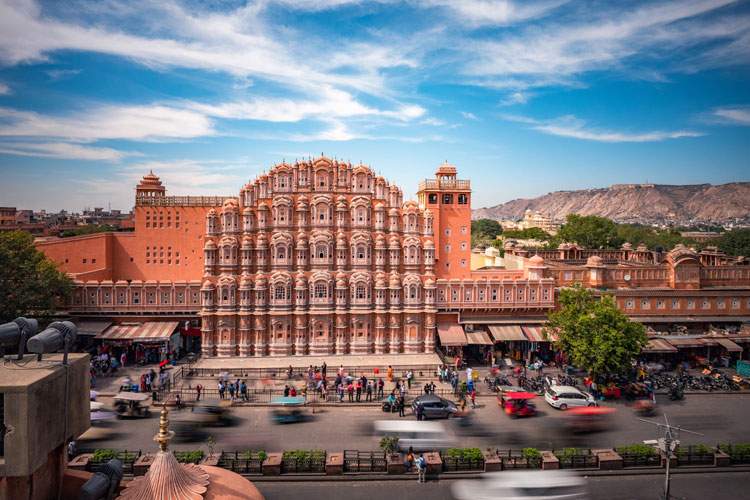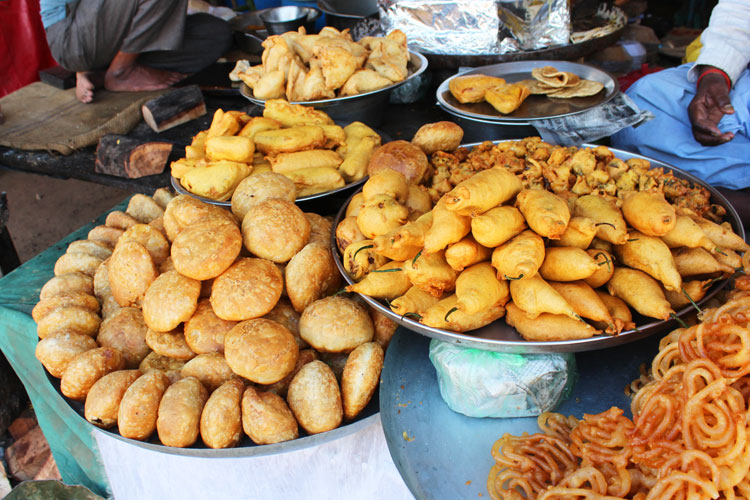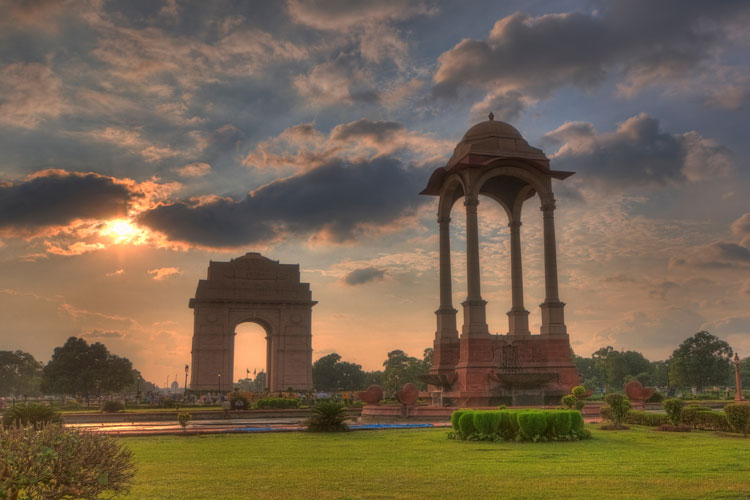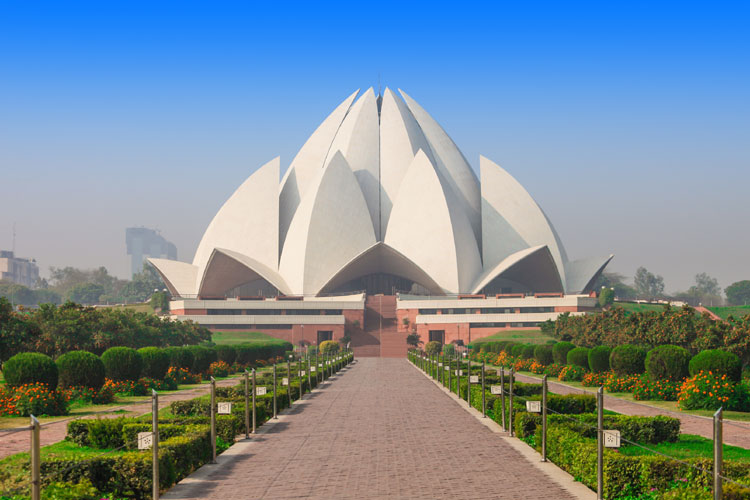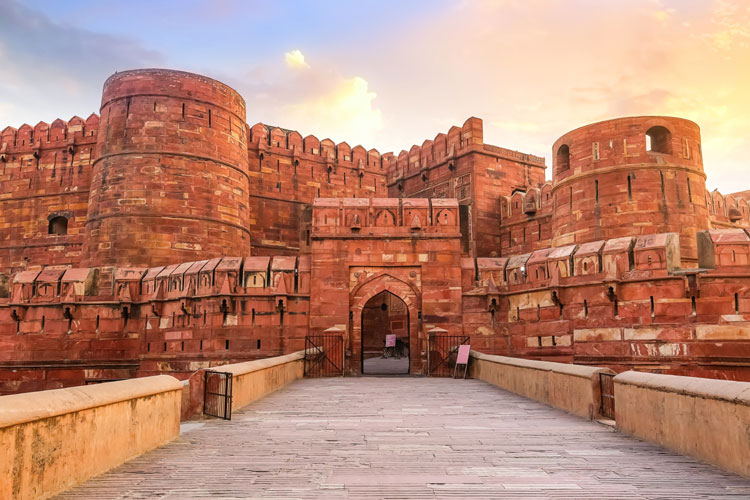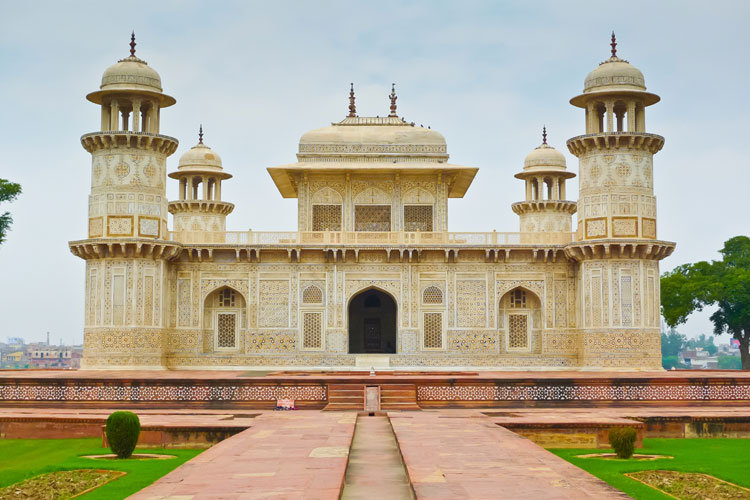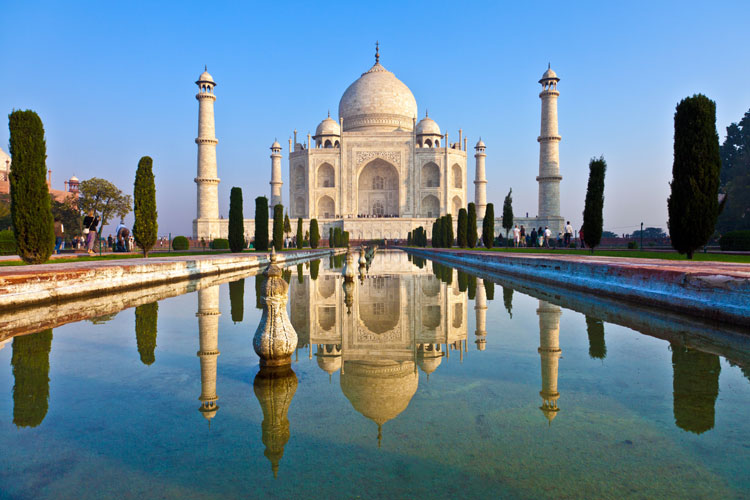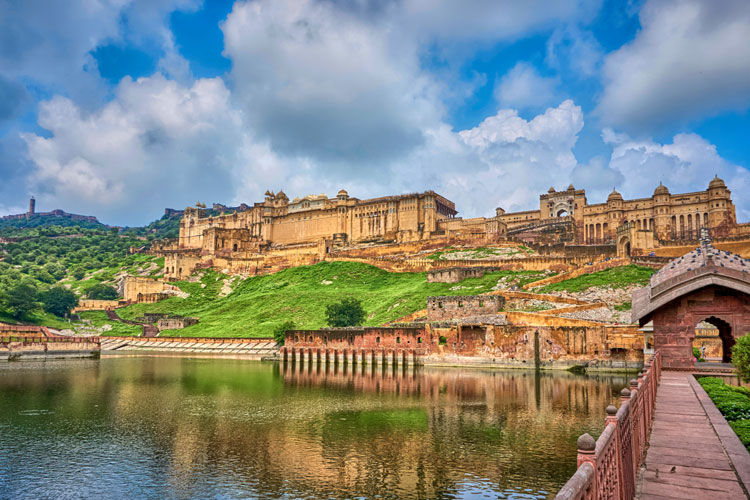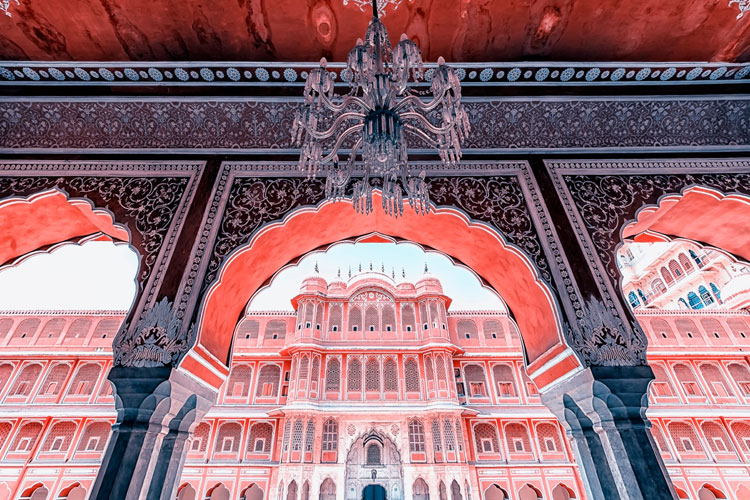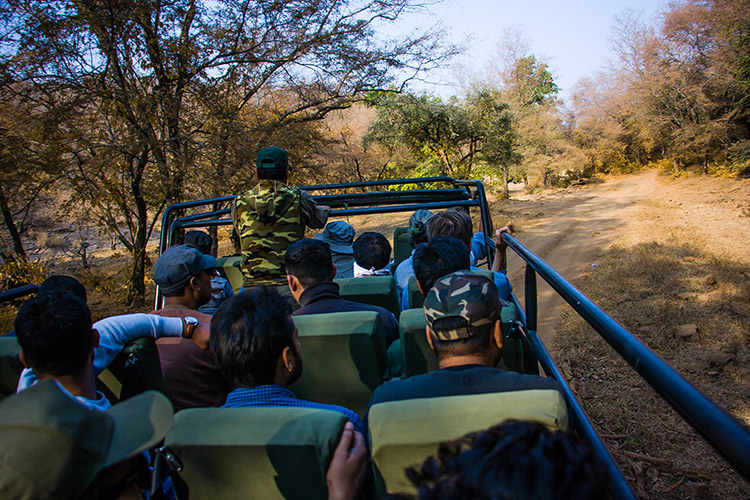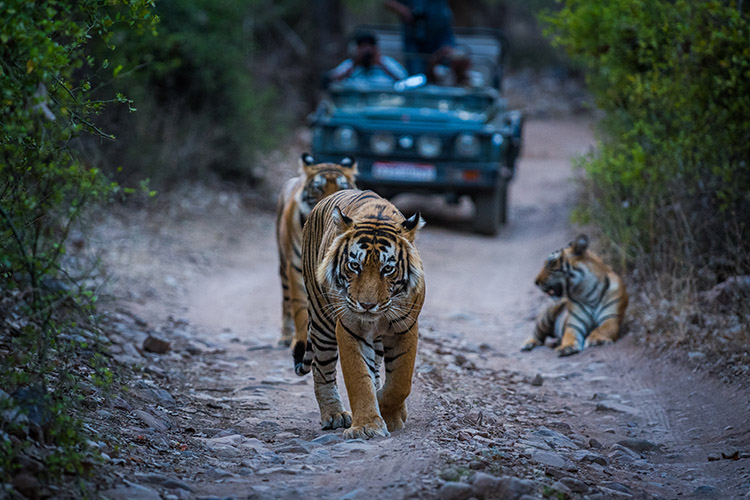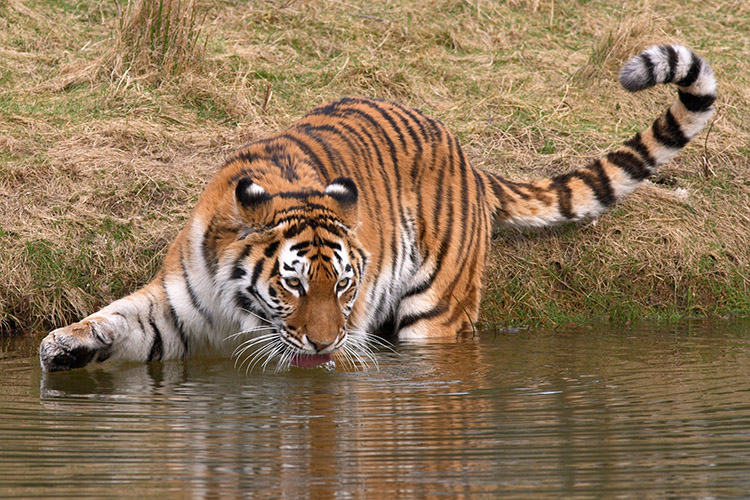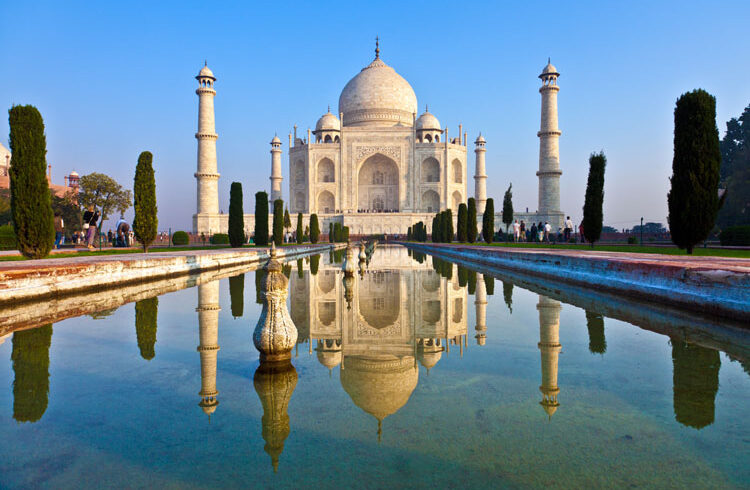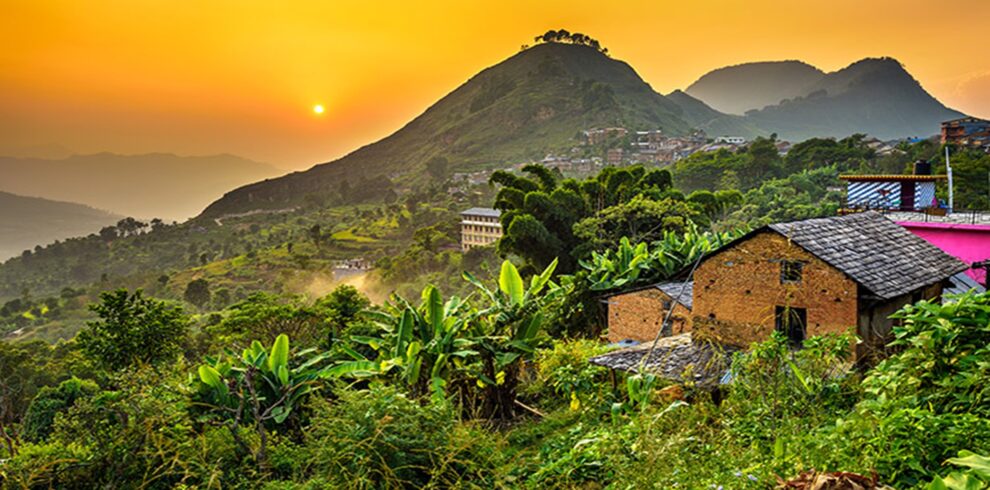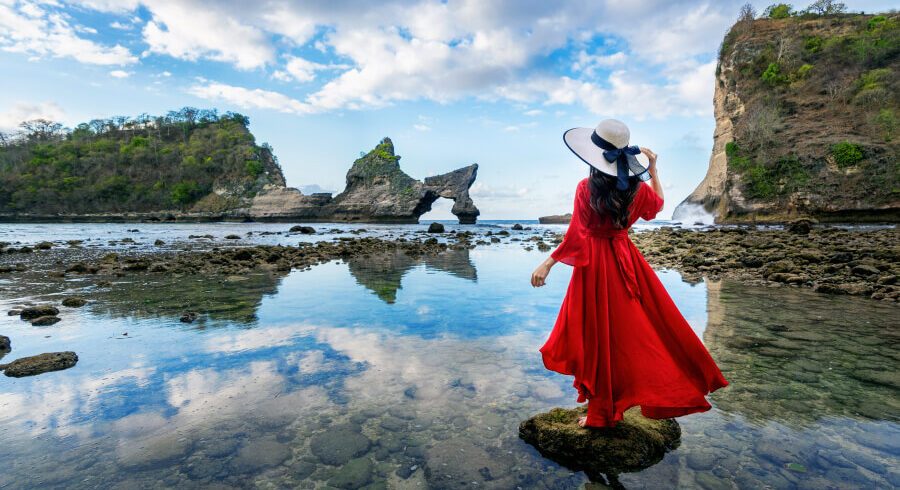Overview
Embark on an unforgettable journey through the heart of India, exploring the vibrant tapestry of Rajasthan and its captivating wildlife. This exclusive tour immerses you in the grandeur of ancient forts, the splendor of opulent palaces, and the thrill of encountering magnificent tigers in their natural habitat.
Highlights
- Delhi: Discover the bustling capital, a blend of old and new, with iconic landmarks like the Red Fort, Jama Masjid, and Qutub Minar.
- Agra: Witness the breathtaking Taj Mahal, a monument of love, and explore the majestic Agra Fort.
- Ranthambore National Park: Experience thrilling wildlife safaris, searching for elusive tigers amidst the park's diverse ecosystem.
- Jaipur: Explore the "Pink City," marveling at the Amber Fort, the City Palace, and the vibrant local markets.
- Deogarh: Indulge in a luxurious stay at a heritage hotel, experiencing authentic Rajasthani hospitality and exploring the region's hidden gems.
- Udaipur: Discover the "City of Lakes," with its picturesque palaces, serene lakes, and breathtaking views.
Itinerary
Arrive in Delhi. On arrival, you will be greeted and assisted by our representative and transferred to the hotel. (Room will be available from 1400 hrs onwards)
Delhi - Delhi has been the seat of power of several empires for about a millennium. It has been destroyed and rebuilt many times, and interestingly, a number of its destroyers have also been its rulers. Delhi today is a potpourri of two distinct cultural lineages—Old Delhi and New Delhi. Juxtaposed against the immaculately planned New Delhi created by the British Raj, Old Delhi, which was once the capital of Islamic India, is a labyrinthine network of lanes and by lanes with crumbling havelis and formidable mosques.
On arrival in Delhi transfer to the hotel.
Overnight at hotel.
After breakfast proceed for visit of Delhi including following:
Photo stop at the Red Fort - Red Fort is the fifth Mughal Emperor Shah Jahan's elegant citadel in red sandstone, built on the western bank of the River Yamuna. Shah Jahan started the construction of this massive fort in 1638, when he decided to shift his capital from Agra to Delhi. The Red sandstone walls of the massive Red Fort rise 33 metre above the clamour of Old Delhi, as a reminder of the magnificent power and pomp of the Mughals. Inside the fort lies a veritable treasure trove, of buildings which includes the Drum House, the Hall of Public and Private Audiences, the Pearl Mosque, Royal Baths and Palace of Colour. (IMP: It remains closed on Mondays.)
Jama Masjid
This great mosque of Old Delhi is the largest in India, with a courtyard capable of holding 25,000 devotees. It was begun in 1644 and ended up being the final architectural extravagance of Shah Jahan, the Mughal emperor who built the Taj Mahal and the Red Fort. The highly decorative mosque has three great gates, four towers and two 40 m-high minarets constructed of strips of red sandstone and white marble. The interior of the prayer hall is divided into aisles by arches. The walls and floors are of marble inlay panels.
Raj Ghat - Raj Ghat is a memorial to Mahatma Gandhi. It is a black marble platform, which marks the spot of Mahatma Gandhi's cremation, held on 31 January 1948, a day after his assassination. It is left open to the sky while an eternal flame burns perpetually at one end. It is located on the banks of River Yamuna. A stone footpath flanked by lawns, leads to the walled enclosure, which houses the memorial.
Later Drive past the Govt. Buildings - New Delhi houses several government buildings and official residences, reminiscent of the British colonial architecture. Today we will drive past a few of them, like The Parliament House (designed by Baker and 173m in diameter), the Rashtrapati Bhawan (once the Viceroy’s residence), now an official residence of the President of India, etc. Designed by Lutyens, it combines western and eastern styles of architecture.
Photo stop at the India Gate - At the center of New Delhi, stands a 42 metre high - India Gate, an "Arc-de-Triumph" like archway, in the middle of a crossroad. Almost similar to its French counterpart, it commemorates 70,000 Indian soldiers, who lost their lives fighting for the British Army, during the World War I. The memorial bears the names of more than 13,516 British and Indian soldiers, killed in the North-western Frontier in the Afghan war of 1919. Under the arch, the Amar Jawan Jyoti commemorating Indian armed forces’ losses in the Indo-Pakistan war of 1971.
Humayun Tomb - Humayun's Tomb is one of the most innovative and experimental monuments of its time, incorporating within it, an Indo-Islamic architectural style. This magnificent garden tomb is the first substantial example of Mughal architecture in India. It was built in 1565 AD, nine years after the death of Humayun, by his senior widow Bega Begam. Inside the walled enclosure, the most notable features are, the garden squares (Charbagh) with pathways and water channels, centrally located well proportional mausoleum topped by double dome.
Overnight at the hotel.
After breakfast drive to Agra, on the way visit Itmad-Ud-Daula / Baby Taj
Itmad-Ud-Daula -Often described as 'jewel box', sometimes called the 'Baby Taj', the tomb of Itimad-ud-Daulah is often regarded as a draft of the Taj Mahal. This exquisite marble tomb was made by Emperor Jahangir's queen, Nurjahan, in the memory of her father Mirza Ghias Beg during 1622-1628 A.D. Built entirely in white marble and inlaid with semi-precious stones, this mausoleum on the bank of the Yamuna River, exhibits a strong Persian influence.
Arrive Agra and transfer to the Hotel.
Agra - Located in the heart of Uttar Pradesh, on the banks of River Yamuna, Agra is a slow paced, quiet town. Also known as the city of the Taj Mahal—one of the seven Wonders of the World—Agra’s significance as the political center of the Mughal Empire ended when ShahJahan transferred his capital to Delhi.However, Agra’s architectural legacy has found it a place in the pages of history.The architectural splendor of the fort, mausoleums and the palaces here are a reminder of the opulence and artistic taste of the Mughal Empire.Agra is also famous for its superb inlay work on marble and soapstone by craftsmen, who are descendants of those who worked under the Mughals.
On arrival in Agra transfer to the hotel.
Overnight at hotel
After breakfast enjoy the visit of the followings –
Taj Mahal - Muted but Soulful, Taj Mahal popularly known as Crown of Palaces is a white marble mausoleum and a UNESCO world heritage site. As a testament to his love, the magnificent structure was built by Mughal Emperor
Shahjahan in the loving memory of his beloved wife Mumtaz Mahal. Situated in the Mughal city of Agra, Taj Mahal looks exactly the same from all the four sides and endorsed as "The Jewel of Muslim art in India". Commissioned in 1632, it took approximately 22 years in the making of this marvellous structure and an estimated 20,000 workers to build this masterpiece that reflects different colours under the canopy of sun. Purely ecstatic and iconic, it attracts (7 to 8) million annual visitors every year. (It remains closed on Fridays)
Agra Fort - A UNESCO World Heritage site, Agra Fort was the main residence of the emperors of the Mughal Dynasty till 1638, before the capital was shifted to Delhi from Agra. The forbidding exteriors of this fort hide an inner paradise as it comprises of a number of exquisite buildings like Moti Masjid - a white marble mosque akin to a perfect pearl; Diwan-I-Am, Diwan-I-Khaas – the audience halls, Musamman Burj - where Shahjahan died in 1666 A.D., Jahangir's Palace; Khas Mahal and Sheesh Mahal. The massive Agra fort is considered as the predecessor of the Red fort in Delhi. Overnight at hotel
After breakfast drive to Ranthambore. On arrival in Ranthambore transfer to the hotel.
Ranthambore - One of the largest and most popular national parks in North India, Ranthambore National Park is named after the historic Ranthambore fortress that is located within the park’s premises. With the Banas River to its north and Chambal River to its south, Ranthambore lies at the edge of a plateau and covers an area of 392 square kilometers. A visit to Ranthambore National Park can be a rewarding experience for a wildlife enthusiast. Home to several fascinating wildlife species, one can spot leopards, striped hyenas, chitals, chinkaras, sambars, langurs, civets, and sloth bears in the park. The park’s pride, however, lies in the number of tigers that can be found prowling in their natural habitat. Dinner and overnight at the hotel.
Early morning, enjoy Safari in Ranthambore National Park.
Return to the hotel and enjoy breakfast in the hotel, later morning is at leisure.
Afternoon enjoy another Safari in Ranthambore National Park.
Lunch, Dinner and Overnight in the hotel
After breakfast, drive to Jaipur.
Jaipur - Capital of the Indian state of Rajasthan, Jaipur is also known as the “Pink City” due the color of its buildings. Built by Maharaja Sawai Jai Singh II in 1727 CE, the city’s plan followed a grid system, making it the only planned city of its time. Vidhyadhar Bhattacharya, a young Bengali architect, designed it as per the texts of the Shilp Shastra, an ancient Indian treatise on architecture. With its innumerable sagas of traditions, culture and practices, Jaipur is a sensory treat for tourists from all over the world.
On arrival in Jaipur, transfer to the hotel.
In evening drive to the Birla Temple for an evening aarti ceremony - Popularly also known as Lakshmi Narayan Temple, it is a Hindu temple in Jaipur city. Located on an elevated ground at the base of Moti Dungari hill, this temple was built by "Birlas"(industrialists who have also built several temples in India) and the presiding deities are Lord Vishnu (One of the Hindu Trinity Gods) and his consort Goddess Lakshmi (Goddess of wealth and good fortune). Made up of white marble, this modern temple dominates the skyline of south Jaipur.
After aarti ceremony, we will take you the to a local house for enjoying cooking demonstration followed by dinner. The experience includes an introduction about various spices and how they are combined to prepare the perfect Indian curries. After the cooking demonstration enjoy Dinner while you interact with the family and learn about the Indian way of living. Overnight at the hotel
After breakfast enjoy the visit of Jaipur including following:
Photo stop at the Hawa Mahal Palace - Enjoy Photo stop at Hawa Mahal. It is the most well-known landmark of Jaipur city, built by Sawai Pratap Singh in 1799. This five-storied building overlooking the busy street is a fascinating example of Rajput architecture and artistry with its delicately honeycombed 953 pink sandstone windows known as 'jharokhas'. It was originally built for the ladies of the royal household to watch everyday life and processions in the city from their veiled comfort as they had to obey the rules of "purdah.
Amber Fort - Set high on a picturesque and rugged hill, it is a principal attraction in Jaipur. A noteworthy fusion of Hindu and Mughal architecture, constructed by Raja Man Singh I in 1592 and completed by Mirja Raja Jai Singh, the fort was declared as UNESCO World Heritage site in 2013. The Fort depicts scintillating aura exquisitely made up of red sandstone and white marbles. The interior walls of the palace portray expressive paintings with carvings, precious stones, and mirror settings. Built mainly for the warring enemies as a safe place, the heavily structured walls defended residents, within the ramparts of the fort.
Jantar Mantar
The Jantar Mantar is a collection of architectural astronomical instruments, built by Maharaja Jai Singh II between 1727 and 1734. He constructed a total of five such facilities at different locations which includes one at Delhi and another at Jaipur. The Jaipur observatory is the largest and best preserved out of these and inscribed on the World Heritage List as "an expression of the astronomical skills and cosmological concepts of the court of a scholarly prince at the end of the Mughal period".
Pink Rickshaw ride -Explore the walled city of Jaipur in these unique and custom-designed, eco-friendly rickshaws driven by well-trained ladies, all from the slums and low-income areas of Jaipur. From the picturesque lanes and by-lanes, to the many palaces, it will take you through the many attractions starting from Tripolia Bazaar, then to Hawa Mahal, Badi Chaupar, Choti Chaupar, Ajmeri Gate, Chodha Rasta and ends at the Albert Hall or vice versa.
Later enjoy a tea at the famous Gulab Ji Shop - Tea is a staple food for so many people in India. Apart from the taste, people usually gather in small roadside tea shops for informal meetings or discussions. This can range from general life, sports especially cricket games to more serious issues of politics and the country. You will enjoy this experience in one of the oldest shops in Jaipur which started at the time of pre- Independence of India (1947).
Overnight at the hotel
After a leisurely breakfast, drive to Deogarh.
Deogarh or Devgarh was the thikana or personal residence of the rawats or chiefs of the Chundawat clan. An integral part of Mewar aristocracy, Deogarh Mahal is the chief attraction of this city. Built in the 17th century, the palace has been transformed into a heritage hotel that offers a luxurious and comfortable stay fit for a king or queen. Located atop a hill, the Palace offers an impressive view of the sprawling Aravali range and the numerous lakes dotting the countryside.
On arrival in Deogarh, transfer to hotel.
Dinner & Overnight at the hotel.
After a leisurely breakfast proceed for visits of Deogarh including following:
Enjoy a rural countryside train ride with the countryside folks to see their day to day living - A ride on the local meter gauge train and down the mountainous Ghats section it is famous for its panoramic views, scrub jungle, hills, tunnels, 100-foot-high bridges, and remote one-man stations. You will experience the real rural life on the train and will have the opportunity to interact with villagers and co-passengers. It’s an approximate 02 hrs ride covering a stretch of around 21 km in total. While travelling, you may see hundreds of monkeys descending from the forest trees who often come for handouts given by the villagers.
Afternoon enjoy a walk in the Deogarh Village - Enjoy a walk through the Deogarh village and watch villagers performing their day-to-day activities. Also, witness women around the community well, pulling water out of the well through water buckets (when the bucket hits the water it dips and fills, and is pulled up with a rope), washing clothes nearby and carrying water to their homes in beautiful matkas (clay pot) on their heads. Feel free to join the group of people sitting under shady trees or may be in open courtyards, discussing everything from the world of politics to domestic issues. You will also get an opportunity to roam around the village market, to see small shops and buy local trinkets there.
All meals & Overnight at the hotel.
After breakfast, drive to Udaipur. On the way visit Jain temples in Ranakpur.
Ranakpur Jain Temple (Only audio guide is available) - Beautifully sculpted Jain temples mark the glory of this renowned place. Considered as one of the five holy places for the Jain community, the temples here were created in the 15th century during the reign of Rana Kumbha and enclosed within a wall. The central Chaumukha (four-faced temple) is dedicated to Adinathji. The temple is an astounding creation of architectural splendour with 29 halls and 1,444 pillars all distinctly carved, with no two pillars being alike.
After sightseeing, continue drive to Udaipur.
Udaipur: Located on the eastern bank of Lake Pichola in the Indian state of Rajasthan, Udaipur or the “City of Lakes” was founded by Maharana Udai Singh as the capital of his kingdom in 1559 CE. The rich cultural, social, and natural beauty of the city is reflected in the historical monuments and serene green surroundings of the place. The palaces, temples and havelis, coupled with the magical beauty of Lake Pichola attract tourists by the dozen, which has enabled this small princely town to grow into a prime tourist destination.
On arrival in Udaipur, transfer to the hotel.
Overnight at the hotel.
After breakfast proceed for visit of Udaipur including following:
City Palace - City Palace towers over the Pichola Lake. The construction of this palace was initiated by Maharana Udai Singh, but successive Maharanas added several palaces and structures to the complex while retaining remarkable uniformity in the design. The entry to the massive Palace is from the Hathi Pol, the Elephant Gate. The Bari Pol or the Big Gate brings you to the Tripolia, the Triple Gate. It was a custom to weigh the Maharaja under this gate in gold and silver, which was distributed to the populace. Balconies, cupolas, and towers of the palace give a wonderful view of the Lake Pichola.
Also visit the Crystal Gallery - Crystals are something which fascinates everyone, and Crystal Gallery is the most exclusive place to see attractive collection of crystals. Located inside the Fateh Prakash Palace, it is the largest private collection of crystals in the world. This gallery was established by Maharana Sajjan Singh. He ordered the crystals collection from the Birmingham-based F&C Osler company in 1877. But due to his untimely death, all crystals remain packed in the boxes for 110 years. It was opened for public in 1994 and the exquisite crystal items in the gallery include tables, sofa set, dining tables, washing bowl, goblet, decanter, perfume bottles, candle stands, crockery, and even beds. The highlight of the gallery is a jewel-studded carpet.
Later start your 45-minute walking tour of the old city. The walk starts at the Tripolia Gate of the City Palace. This part of the Bazaar is full of small shops on both sides of the road selling exquisite handicrafts. Further down the road, there is a very famous Hindu temple called Jagdish Temple. The temple is dedicated to Lord Vishnu, the preserver of the universe. We continue our walk down the road towards the Clock Tower, where you will see many interesting local shops selling different articles of day-to-day requirements. From Clock Tower, we turn into the Silver Market, where you will see many shops selling silver jewellery and pieces.
Further down the road, explore the shops for handmade shoes, which are typical of the region. You can buy some of the distinctive embroidered shoes called Jutties.
At the end of the road, you will enter the vegetable market square, where your walk will end. Inside the vegetable market, you will see many ladies sitting around bamboo baskets used by the vegetable vendors to display the fresh vegetables.
In the evening proceed on a Boat ride on Lake Pichola - it is an artificial freshwater lake fringed with great hillocks, gardens, Havelis, ghats, and temples. The scenic beauty of serene Pichola adds to the beauty of Udaipur city. The boat ride on Lake Pichola is amazing and provides a marvellous view of the lake and the mountains in the city. Lake Pichola also presents some of the most important historical monuments dotted along the lakeside or submerged within the lake.
Overnight at the hotel
After a leisurely breakfast, transfer to the Airport to connect flight to Delhi. (Rooms will be available till 1200 hrs.)
Arrive Delhi and transfer to the Hotel.
Overnight in the Hotel.
In time transfer to the airport to board the flight back home
(Check out time is 1200 Hrs).
End of Services
Includes/Excludes
Cost Includes
- Double / Twin room on sharing basis
- Daily Breakfast at all the places. Full board while staying in Ranthambhore and stay in Deogarh is on half board basis.
- TRANSPORTATION: All ground transportation, as detailed in the itinerary using AC Vehicle as given below:
- AC Toyota Innova up to 03 pax
- AC Tempo for 04 Pax.
- * Services of local English-Speaking Guide for Sightseeing only (Different Guide for each destination)
- * Following additional amenities / activities are part of the package –
- • 02 exclusive jeep safaris in Ranthambhore National Park.
- • Aarti ceremony at a Hindu temple in Jaipur.
- • Cooking demonstration followed by dinner with local Indian family in Jaipur.
- • Pink Rickshaw city tour through old city in Jaipur (01-hour ride)
- • Tea tasting at a famous tea shop in Jaipur.
- • A countryside train ride in Deogarh.
- • Deogarh Village walking tour.
- • A short walk in Udaipur.
- • Private Boat ride on lake Pichola in Udaipur
- • 02 bottles of Mineral water per person per day basis in the vehicle
- Current monument entrance fee.
- Currently applicable taxes
Cost Excludes
- X Any airfares.
- X Any expenditure of personal nature such as drinks, tips, laundry, telephone charges etc.
- X Any new tax imposed by the Govt.
- X Any Visa services




